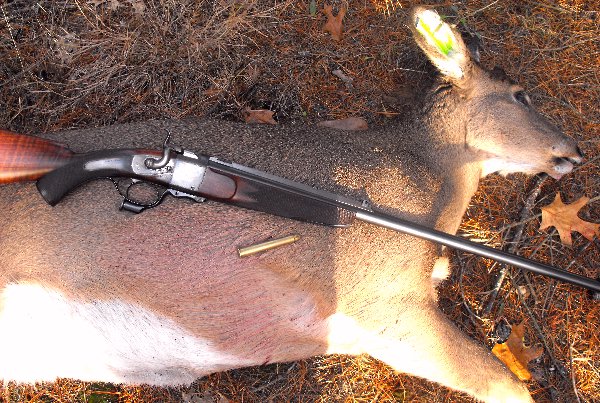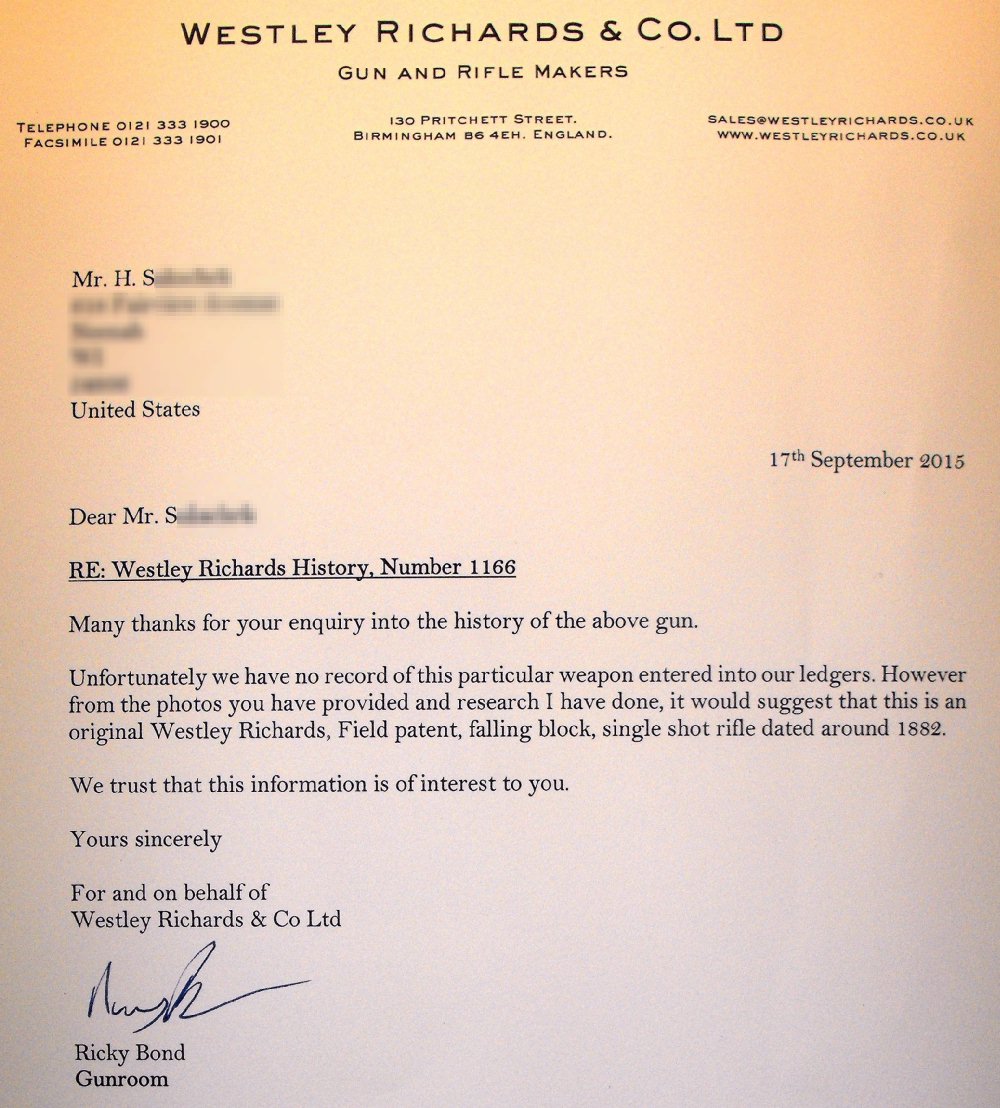Westley Richards Falling Block -FIELD'S Pat action - 07/23/15 05:52 AM
Westley Richards Falling Block -FIELD'S Pat action
Hello All,
I had been searching high and low for a Daniel Fraser Single Shot Rifle - unfortunately with little success. However, along the way I came across this unique Westley Richards Single Shot Rifle, and I just couldn't pass it up.
It was built on a Field's Patent action in January of 1882. Caliber is 500/450 1-1/2" case. (aka No.1 WR Carbine)
I was somewhat surprised by the similarity of this action to that of the Winchester Hi-Wall action. The lever is underneath on the Winchester, and the lever is on the side on the Field's action. It is interesting to note that the Field's action was patented in 1877, a full year before John Browning designed his Single Shot Hi-Wall action. I wonder if John Browning may have been influenced by the Field's action and only modified that design, rather than inventing his own action.
Specifications of my rifle are: 25" Full Octagon Barrel with a ramrod underneath - 8 pounds 1 oz - 14" LOP - Ivory Diamond Inlays on each side of the grip - 1 standing & 4 Folding Leaf & Ladder Express Site - Right Hand Push Forward Side Lever - Scroll Engraved Receiver - Steel Engraved Butt Plate w/ Trap. (there is some evidence of a vintage stock repair, but it is minor and can only be seen in bright sunlight)
I have spoken with Wal Winfer ("Westley Richards Single Shot Rifles", author) about this rifle's non-typical lever. This rifle has a "straight-vertical" lever, whereas most others have a "serpentine-angular" lever. It was Wal's opinion that the lever on my rifle was an early design as there was much variation of levers in the beginning. He suggested I remove the lever and see if it had a matching serial number - which it did have, stamped on the back.
Although this cartridge seems small, the factory load was 55g black powder under a 380g paper patch bullet for 1300 fps. I have been shooting a 380g lead bullet at slightly over 1400 fps which yields over 1700 ft/lbs muzzle energy. This loading actually exceeds the 45-70 Trapdoor Springfield Carbine Factory load by 150 fps.
I'm very pleased with this rifle's shooting. Apparently the lead paper-patch bullets give a better seal in the bore than the Hornady jacketed bullets based on the higher velocity with the same powder charge.
The lead bullets shot very well, but this load is at maximum and a little too hot for me. Although the cases gave easy extraction, they expanded ever-so-slightly, so that when I inserted a fired case back into the chamber, it required a lot of thumb pushing on the case head before the action would close. By contrast, the cases that fired the jacketed bullets, could be replaced into the chamber without any pushing, and the action would close freely. Next time I'll try reducing the powder charge by 2 grains for the paper patch bullet load.
My actual target follows.
I've been practicing with the rifle with the expectation of using it to bag a Wisconsin Whitetail Deer this Fall. I am finding that estimating the range in order to use the correct site leaf will take some practice. The standing site is marked "50" and that's the one used shooting at the 50 yard target that follows. The first folding leaf is marked "100", the next "200", the next "300", the 4th leaf is marked "400", and then the "ladder-site" goes up another several hundred yards with the highest mark being "11".
Westley Richards must have had some very good shooters back in 1882, to take advantage of these sites. Or maybe they just wanted to intimidate the competition.
I recently contacted Westley Richards asking about this rifle, and they are sending a Factory Letter - hopefully I'll discover more History about it.
Your comments are welsome.
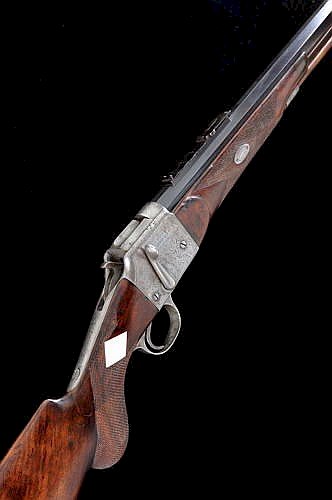


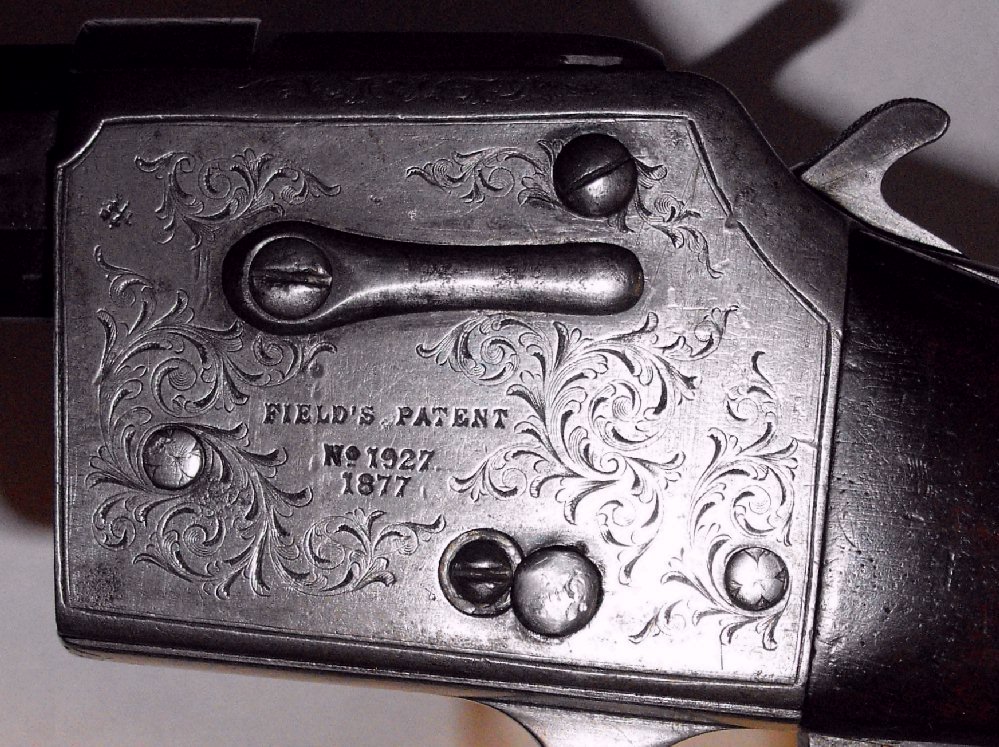

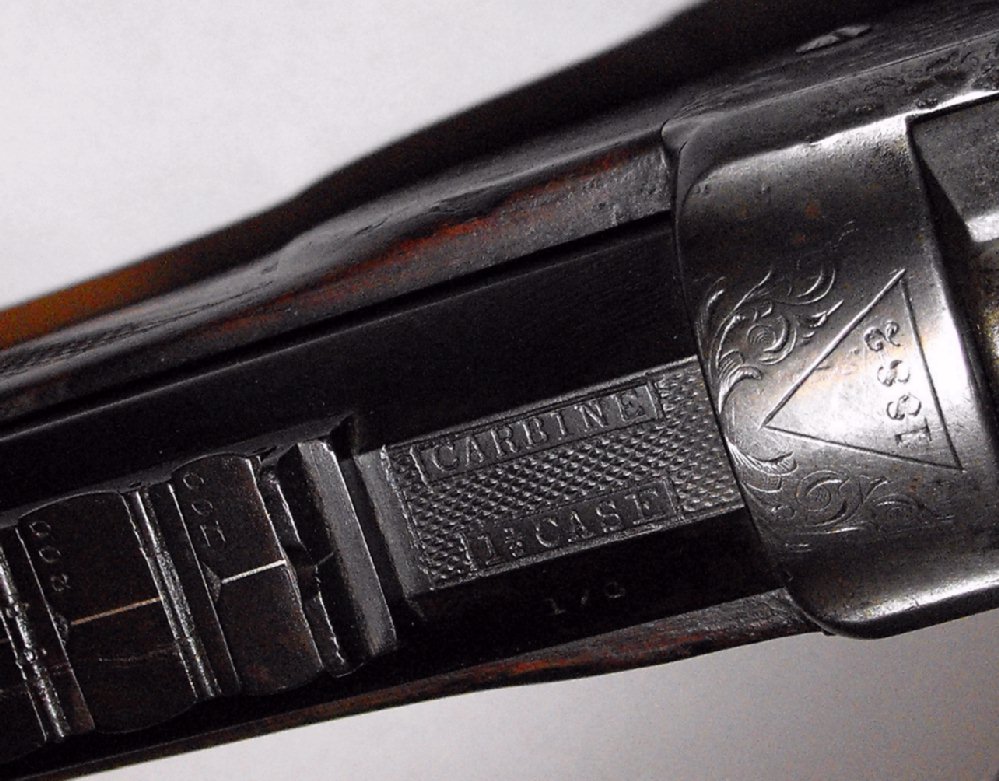


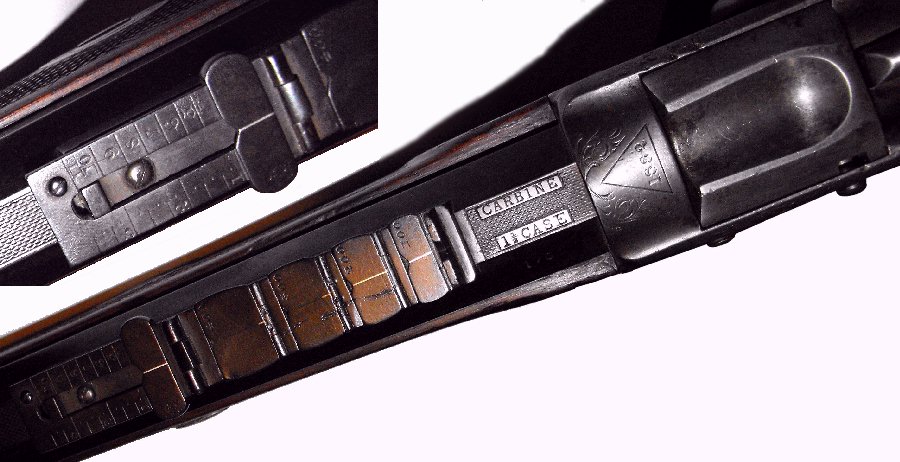
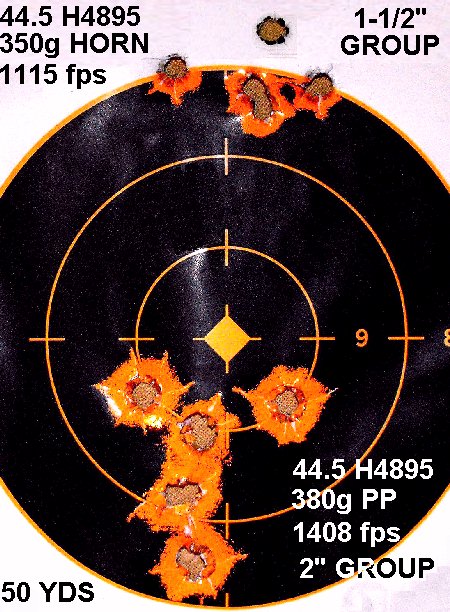
Hello All,
I had been searching high and low for a Daniel Fraser Single Shot Rifle - unfortunately with little success. However, along the way I came across this unique Westley Richards Single Shot Rifle, and I just couldn't pass it up.
It was built on a Field's Patent action in January of 1882. Caliber is 500/450 1-1/2" case. (aka No.1 WR Carbine)
I was somewhat surprised by the similarity of this action to that of the Winchester Hi-Wall action. The lever is underneath on the Winchester, and the lever is on the side on the Field's action. It is interesting to note that the Field's action was patented in 1877, a full year before John Browning designed his Single Shot Hi-Wall action. I wonder if John Browning may have been influenced by the Field's action and only modified that design, rather than inventing his own action.
Specifications of my rifle are: 25" Full Octagon Barrel with a ramrod underneath - 8 pounds 1 oz - 14" LOP - Ivory Diamond Inlays on each side of the grip - 1 standing & 4 Folding Leaf & Ladder Express Site - Right Hand Push Forward Side Lever - Scroll Engraved Receiver - Steel Engraved Butt Plate w/ Trap. (there is some evidence of a vintage stock repair, but it is minor and can only be seen in bright sunlight)
I have spoken with Wal Winfer ("Westley Richards Single Shot Rifles", author) about this rifle's non-typical lever. This rifle has a "straight-vertical" lever, whereas most others have a "serpentine-angular" lever. It was Wal's opinion that the lever on my rifle was an early design as there was much variation of levers in the beginning. He suggested I remove the lever and see if it had a matching serial number - which it did have, stamped on the back.
Although this cartridge seems small, the factory load was 55g black powder under a 380g paper patch bullet for 1300 fps. I have been shooting a 380g lead bullet at slightly over 1400 fps which yields over 1700 ft/lbs muzzle energy. This loading actually exceeds the 45-70 Trapdoor Springfield Carbine Factory load by 150 fps.
I'm very pleased with this rifle's shooting. Apparently the lead paper-patch bullets give a better seal in the bore than the Hornady jacketed bullets based on the higher velocity with the same powder charge.
The lead bullets shot very well, but this load is at maximum and a little too hot for me. Although the cases gave easy extraction, they expanded ever-so-slightly, so that when I inserted a fired case back into the chamber, it required a lot of thumb pushing on the case head before the action would close. By contrast, the cases that fired the jacketed bullets, could be replaced into the chamber without any pushing, and the action would close freely. Next time I'll try reducing the powder charge by 2 grains for the paper patch bullet load.
My actual target follows.
I've been practicing with the rifle with the expectation of using it to bag a Wisconsin Whitetail Deer this Fall. I am finding that estimating the range in order to use the correct site leaf will take some practice. The standing site is marked "50" and that's the one used shooting at the 50 yard target that follows. The first folding leaf is marked "100", the next "200", the next "300", the 4th leaf is marked "400", and then the "ladder-site" goes up another several hundred yards with the highest mark being "11".
Westley Richards must have had some very good shooters back in 1882, to take advantage of these sites. Or maybe they just wanted to intimidate the competition.
I recently contacted Westley Richards asking about this rifle, and they are sending a Factory Letter - hopefully I'll discover more History about it.
Your comments are welsome.










